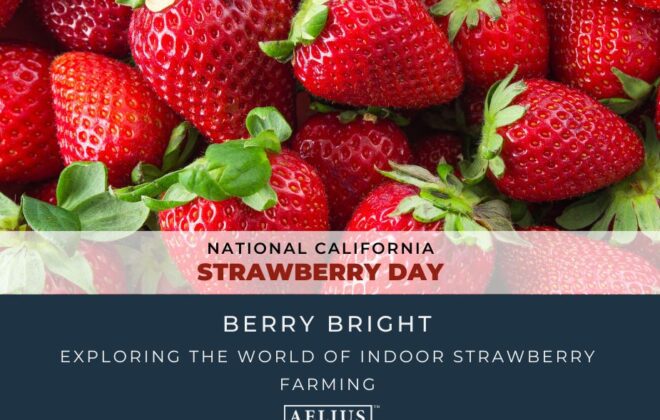Is Indoor Farming the Solution to Food Scarcity?


Six years ago, the United Nations pledged to end hunger, food insecurity, and malnutrition by 2030. Unfortunately, the world is nowhere near achieving this goal, with climate variability, supply chain issues, and economic slowdowns impacting the progress. The pandemic has only made this gap even larger, with the rate of world hunger rising to 9.9 percent in 2020, from 8.4% in 2019. In 2020 alone, between 720 and 811 million people in the world were impacted.
Large cities, in particular, are experiencing extreme food disparity where there is the illusion that food is available, but either the food is unhealthy and over-processed, like what is often found in convenience stores, or highly inflated making healthy eating inaccessible for a growing population of Canadians. Some of the biggest cities in North America have large expanses of land where food isn’t being grown, relying on imports to receive their daily meals. This raises the price of healthy food, leaving a large population of Canadians resorting to unhealthy and over processed items that are in their budget.
At the same time, our population has increased, transforming agricultural spaces into residential and commercial properties. As a result, the amount of viable land is dramatically decreasing, resulting in more people to feed, with less food to feed them.
Navigating The Fourth Wave of Agriculture
The traditional agriculture model of outdoor farming, on its own, is unable to sustain the current demand for healthy, affordable food. Soil vitality, water scarcity, climate variability, and land scarcity, has impacted the amount of viable, quality local crops, and this problem is compounded with the recent supply chain issues.
The Canadian market is left with two choices, importing foods from across the globe, placing us at risk of inflation and supply challenges, or adopting the fourth wave of agriculture: Indoor Farming.
Indoor farming has the potential to resolve several of these challenges, including climate variability, water scarcity, and supply challenges. According to a report from KD Market Insights, the market for indoor farming is potentially lucrative with revenue expected to exceed 170 billion USD by 2025. Applying this farming method on a large scale, will not only improve crop consistency but increase access to affordable, and local, fruits and vegetables within the area.
This method, which is being called the fourth wave of agriculture, involves transforming warehouses and other windowless structures, into controlled indoor growing environments.
However, solving this problem requires bold actions, including changing the way that we look at agriculture and the food industry.
Indoor farming provides the option to retrofit existing structures into flourishing indoor gardens. These fully controlled environments involve designing technologically driven spaces, including climate control, robotics, irrigation and lighting. This enhances consistency within the crops which will in turn lend towards price stability. Having full control over the growing environment, helps ensure a stable supply chain paving the way for long-term contracts with distributors and retail markets.
The advances in LED lighting technology increased the sustainability of these infrastructures, making it possible for farmers to adjust or select the wavelength, intensity and photo-period to the specific needs of the crop. Growers can research and select their lighting recipes to match the specific needs of the crops, while also providing the opportunity to run longer cycles, and increase yields. These systems can also be paired with other renewable energy sources, including solar and geo-thermal, increasing energy efficiency while decreasing the overall carbon footprint.


The Future for Indoor Farming
Although Canada is lagging behind the leaders in indoor agriculture, which include the Netherlands, Israel, the United States, and Singapore, the industry is beginning to grow.
Manufacturers and governments are recognizing both the benefit and necessity of cultivating a more autonomous Canada, including investing in indoor farming.
Inflation and supply chain issues have helped to accelerate this shift into the fourth wave of agriculture.
In February 2021, McCain Foods Limited made a 65 million dollar investment to Good Leaf’s Food, to build a 45,000 square foot indoor farm facility in Guelph, Ontario. The Quebec provincial government has set aside 91 million dollars with the intent of doubling the volume of indoor production of both fruit and vegetables.
Indoor farming is the future of agriculture. It has the potential to resolve the core challenges that are plaguing the agriculture industry, while increasing access to healthy, affordable food across the globe. To get there, we need leaders and change makers to invest and integrate the technology that will transform these indoor spaces into a green oasis that will feed the community.




